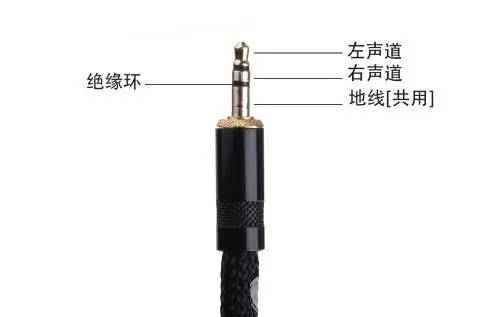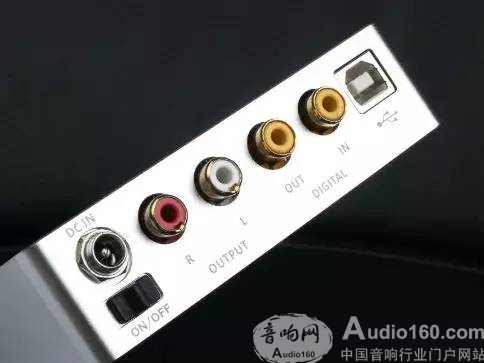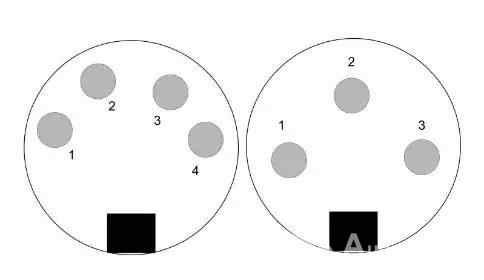In an audio device, what is balanced output/input, what is unbalanced output/input? I am afraid that this concept has never been touched by most users. Although we often see some devices with such functions in the evaluation. For example, we use the test platform E-MU 1616m audio interface, E-MU PM5 speaker, etc., but we do not use the balanced interface in general, after all, our article should serve ordinary users.
It is not difficult to see that this concept tends to appear more on professional monitor devices. What advantages will it bring from signal balanced input, balanced power amplification to balanced output? For some high-end fever devices, does it have any How to use it on headphones and amps?
What is unbalanced output/input?
Why do we not use balanced output, but unbalanced output? There seems to be no reason why. For a stereo audio system, according to the standard, its left and right channels each have two lines to form a signal loop. The signal is transmitted, and the other ground is used to derive the noise. For devices such as headphones, the ground wire can be combined into one. The two channels use a ground wire. Because the 3.5mm plug is so defined, it makes no sense. Can speak? So the vast majority of what we usually see are unbalanced input and output.

As shown in the figure, this is the same as the 3.5mm [6.25mm] interface used in our most common stereo. Their plugs are divided into three segments, corresponding to three wires, which have standard definitions. All audio devices use 3.5. Mm stereo input and output, are connected according to this specification. As shown in the figure, the most root segment is used to connect the ground wire to derive system noise. The top is the right channel signal, then the left channel signal. Black part Is the insulation ring.
Another type of interface, the commonly used RCA interface on our sound card, is also the interface of unbalanced signal input and output. The general standard definition RCA interface is divided into two red and white, red for the right channel, white for the left channel, plug and The outside of the socket is grounded and the center is the signal.

The interface of unbalanced output obviously occupies the absolute mainstream of most audio devices. As for why? The specification is thus passed on. To use the balanced interface, it is necessary to provide a balanced amplifier circuit for the power amplifier or audio source device. "It is used more in the professional field because of the advantages of balancing the power amplifier circuit. Strictly speaking, what is needed for "balance" is its "balanced power amplifier circuit".
What is balanced output/input?
The definition of non-equilibrium is relatively balanced. The balance has not been promoted in civilian use, and the power amplifier, the cost and the overall standard setting have a certain relationship, there is no need to entangle it is why. To use balanced input and output, and to take advantage of it The core is the power amplifier. Because of its different output forms, the interface naturally has to be different.
From the interface point of view, balanced input and output each channel needs to provide the source of the two positive and negative access signals [wiring], why should we do this? We talk about the working principle of balanced amplifier below. Therefore, we are the most common There are three kinds of plug sockets for balanced input and output. First, 6.25mm three-section [three-core] plug; second, XLR three-core Canon plug; third, XLR four-core Canon plug.
6.25mm three-pin plug: It can save a lot of volume compared to XLR, so it can be seen on many audio interfaces. Even some entry-level USB sound cards, such as E-MU 0204USB, etc. 6.25mm plug and 3.5 The mm plug is actually no different, just thicker. The reason for using it for professional applications is probably two. First, it looks professional. Second, the size is large, the contact surface is large, and the plug-in ratio is 3.5. Mm is more stable. Third, the standard is caused. When the 6.25mm three-pin plug is used for balanced signal access, its root is still defined as the ground connection, and the middle is the signal positive, the top is the signal negative. One plug only Responsible for one channel.
XLR Canon plug: Compared with the 6.25mm plug, the plugging stability and reliability of the XLR plug is obviously better. As shown in the figure, it is a schematic diagram of the four-core XLR Canon socket and the three-core XLR Canon socket. The black part is designed for the "clip" lock that is unique to the Canon plug.

Our common XLR interface is a three-core standard. Its plugs and sockets are not defined by "male" and "mother". The plugs or sockets are marked with numbers 1, 2, and 3. According to the specification, a single balanced signal input and output is used. A three-core XLR Canon plug, one port is grounded. According to different specifications, 2 and 3 are positive and negative. It is similar to the 6.25mm three-core balanced plug.

How is the four-core XLR defined in the balanced signal connection? As the output of the balanced amplifier, it does not need the ground wire to form a loop on the load [eg speaker, earphone], so we can save the ground connection [if you like, The outer casing can be grounded], so there is a four-core XLR. Its convenience lies in four interfaces of one interface, two for each channel, which can realize stereo input and output. The definition of 1234 interface is left + left - right +right-.
In fact, the Canon interface is just a form of interface, it is mostly used for professional applications, but also has a five-core standard Canon interface.
Why use balanced input and output?
Although the unbalanced interface is our most common interface, and the balanced interface is more used in professional equipment, but the above dazzling introduction is estimated to be confusing? But this is only a superficial phenomenon, why should we use a balanced interface? Strict Said that the balance interface exists in order to correspond to the output of the balanced power amplifier [three-core microphone XLR interface is different], if there is no balanced power amplifier, the use of balanced interface theory has no practical significance. So what is the balanced power amplifier?
As shown in the figure, this is a balanced bridge connection input and output diagram. As a balanced power amplifier, whether its input signal is balanced or unbalanced, it can be divided into phase difference π by the circuit [ Two signals of 180°]. A pair of signals with opposite phases on the left and right sides as shown in the figure [Note: If used for stereo amplification, this is a schematic diagram of a channel]. These two signals are theoretically identical, only phase The polarity is reversed. Each set of amplifiers is a differential double-ended input [note, here is the opposite polarity of the input signal phase].

In the figure, the R load can be regarded as a speaker or an earphone. After amplification by the power amplifier, the signal at the output end is also the signal with the opposite phase polarity, and other properties are completely consistent. The output terminals are respectively connected to the positive pole of the load [such as the earphone] and Negative, the polarity of the signal is turned, but the polarity of the common mode noise generated in the power amplifier circuit is changed. Therefore, the two signal strengths on the load [such as headphones] are doubled, and the noise is opposite to each other. The phase is offset.
The balanced output form is the BTL output form. Many people ask BTL [Balanced Transformer Less] what is the difference between balanced bridge load output and balanced output? The answer is obvious. BTL refers to the output circuit working form, and we are used to The "balanced output" seems to include its input form, connection method and the way the amplifier works. Of course, it is often understood one-sidedly. For example, if you see an XLR interface, you will say that this is a balanced interface. Instead of thinking about how it works, etc.
The advantage of balanced output obviously must be balanced by the power amplifier. It does not care whether the system input signal is balanced [of course, the balanced signal input is more accurate], but the signal is forced to be divided into balanced signals with opposite phase polarities at the input of the power amplifier circuit. The two sets of signals are respectively amplified by a set of circuits, and the output ends are respectively connected to two segments of opposite polarity. At this time, the polarity of the useful signal is flipped twice to form a superposition, and the output power is doubled. The noise is only phase-flip through the output, so it is coupled on the load and the common mode noise is cancelled.
Balanced power amplifiers can work with "space" for "quality". In single-ended unbalanced power amplifiers, we have to increase the power. The general method is to increase the voltage or current of the power amplifier. The way to balance the power amplifier. The input end is divided into two, a set of amplifying circuit is added, and finally the output is coupled and superimposed. When the supply voltage is constant, the balanced power amplifier can achieve a larger output power.
How to balance the power amplifier and headphone change?
The working methods and advantages of balanced power amplifiers have been briefly introduced. So, how do we use them? First of all, the traditional three-core XLR Canon interface speakers are not uncommon. If you have a balanced output source and amplifier, Can consider it.
Why do many enthusiasts go to the line and let the headphones have a four-core XLR interface to use?

From the above introduction, everyone should have already understood. If you do not consider grounding, the interface corresponding to the balanced output only needs 2 wires per channel, so the 3.5mm four-pin plug can meet this requirement. The original 3.5mm four-pin plug is It is used for stereo plugs with a microphone. It defines the top two as left + right +, while the two on the root are different according to the standard, one is grounded and the other is a microphone interface. On the balanced interface of HiFiMan, it will These four cores are defined as left + right + left - right - so that such a plug can not be used on other 3.5mm players, the same reason, without such a plug can not experience the role of balanced amplifier, and will Because the ground line is skewed to the negative phase signal, the sound is confusing.
And some of the enthusiasts have changed the original three-pin plug of the headset into an XLR four-pin plug. How is it done? For what purpose?
Rewiring is not easy for some headphones, such as the Philips SHP9000. We know that the SHP9000, and some AKG headphones, its output interface is a special three-pin plug. This shows that there are only three wires connected to the earphone unit. If you want to use it to balance the interface, obviously it will not work. So, this netizen made a hole on the other side of the SHP9000... directly connected the wire to the unit to lead out. So the two lines of the left and right channels are realized. XLR four-core interface pairing. And Sennheiser HD650 and other left and right channels respectively into the headphones, the modification is naturally convenient.
Many netizens believe that the separation of the ground lines of the left and right channels is better than the sound of the left and right channels sharing the ground line when inputting the headphones. From our current trial results, it seems to be a misunderstanding of balanced input and output. If there is no balanced amplifier Cooperating, XLR four-core input does not seem to be much necessary.
More cycles are an advantage by a lithium product we`re gonna get. You know the lithium batteries could provide thousands of cycles versus lead-acid batteries which only offer hundreds of cycles. It is a big difference in the cycling ability of lithium over lead-acid batteries.
The UFO Lithium Battery Packs include the popular sizes used in the lead-acid batteries but with the advantages of LiFePO4 technology. It maintains a ideal performance for deep cycle applications. At the heart of each UFO golf cart Lithium batteries is UFO PCM to take control of the battery performance and prevent the batteries from potential failure.
-- Deep depth of discharge. Lithium batteries are designed to last longer with a deep depth of discharge. It enables some electronics such as high-tech and smart devices to work for a longer time.
-- Fast charging speed. When using lithium batteries for your electronic device, you can save time for charging and improve working efficiency.
-- Long service life. The lithium batteries provides up to 2000 cycle life with proper use. The features of less maintenance and longevity makes it a perfect option for power supply.
-- Wide temperature range. The lithium batteries can withstand extreme temperature. It can work in a cold winter or hot environment without battery failure. It is suitable for outdoor applications.
Golf Cart Battery,6 Volt Golf Cart Batteries, Lithium Batteries,Lithium ion Batteries
ShenZhen UFO Power Technology Co., Ltd. , https://www.ufobattery.com